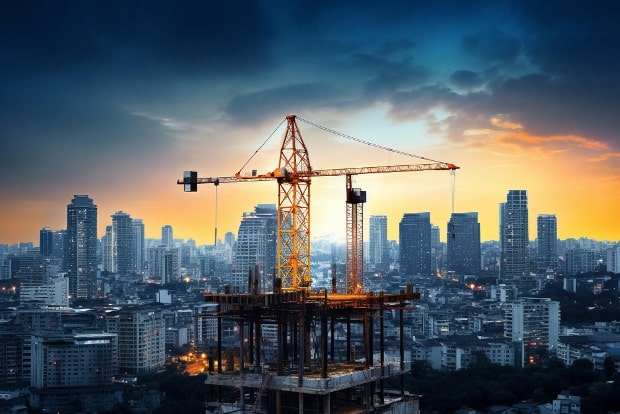Introduction
The construction industry is renowned for its dynamic and challenging nature. With complex projects and high-risk environments, safety practices are paramount to ensure the well-being of workers and the success of projects. In this article, we will explore the essential safety practices in the construction industry, emphasizing the importance of a safety-first approach and how it can transform the industry.
The Importance of Safety in Construction
The High Stakes of Construction Work
Construction sites are among the most hazardous workplaces, with risks ranging from falls and equipment accidents to exposure to hazardous materials. According to the Occupational Safety and Health Administration (OSHA), one in five worker deaths in the U.S. is in construction. The stakes are high, and thus, implementing robust safety practices is not just a regulatory requirement but a moral obligation.
Economic and Legal Implications
Accidents and injuries on construction sites can lead to significant financial losses due to project delays, increased insurance premiums, and potential legal liabilities. Investing in safety can reduce these risks, leading to cost savings and enhanced reputation for construction firms.
Core Safety Practices in the Construction Industry
Comprehensive Safety Training
Onboarding and Continuous Education
Effective safety training starts with thorough onboarding processes. New employees should receive detailed instructions on safety protocols, emergency procedures, and proper use of equipment. However, training should not end there. Continuous education through regular safety drills, updates on new safety regulations, and refresher courses is crucial.
Specialization-Specific Training
Different construction roles come with unique hazards. Electricians, welders, and heavy machinery operators, for example, face distinct risks. Specialized training tailored to these roles ensures that all workers are well-versed in handling the specific dangers associated with their tasks.
Personal Protective Equipment (PPE)
Essential Gear
Personal Protective Equipment (PPE) is a fundamental aspect of construction safety. Essential PPE includes hard hats, safety goggles, gloves, high-visibility vests, and steel-toed boots. Each piece of equipment serves a critical function in protecting workers from specific hazards.
Proper Usage and Maintenance
Providing PPE is only part of the equation. Ensuring that workers use PPE correctly and maintain it properly is equally important. Regular inspections and replacements of worn-out gear prevent failures that could lead to injuries.
Site Safety Management
Regular Inspections
Routine safety inspections are vital to identify and mitigate potential hazards. These inspections should be conducted by trained safety officers who can spot risks that might be overlooked by untrained eyes.
Hazard Communication
Clear communication about potential hazards is essential. This includes visible signage, clear labeling of dangerous areas, and regular safety meetings where workers can discuss potential risks and share their observations.
Safe Use of Equipment
Machinery and Tools
Construction equipment, from power tools to heavy machinery, poses significant risks if not used properly. Training workers on the safe operation of equipment, including emergency shut-off procedures, is critical. Additionally, regular maintenance and inspections of machinery ensure that they are in safe working condition.
Innovative Technologies
Adopting new technologies, such as drones for site inspections and wearables that monitor workers’ vital signs, can enhance safety. These innovations provide real-time data and insights, allowing for quicker responses to potential hazards.
Fall Protection
Scaffolding and Ladders
Falls are one of the leading causes of injuries and fatalities in construction. Proper use of scaffolding and ladders, including secure anchoring and use of guardrails, is crucial. Training workers on safe practices when working at heights can prevent many accidents.
Harnesses and Safety Nets
In situations where workers must operate at significant heights, fall arrest systems, such as harnesses and safety nets, are essential. Ensuring that these systems are correctly installed and used can save lives.
Creating a Culture of Safety
Leadership Commitment
Leading by Example
Safety starts at the top. When company leaders prioritize safety and demonstrate their commitment through actions, it sets a standard for the entire organization. Leaders should be visible in their support for safety initiatives and participate in safety meetings and training sessions.
Policy Development
Developing comprehensive safety policies that are enforced consistently across all projects is crucial. These policies should cover everything from daily safety checks to emergency response plans and be regularly updated to reflect new safety standards and technologies.
Worker Involvement
Empowering Workers
Empowering workers to take an active role in safety can lead to better outcomes. This includes encouraging them to report hazards, suggest improvements, and participate in safety committees. When workers feel responsible for their own safety and that of their peers, compliance with safety protocols increases.
Recognition Programs
Recognizing and rewarding safe behavior can reinforce the importance of safety. Programs that highlight and reward teams or individuals who adhere to safety protocols can motivate others to follow suit.
Continuous Improvement
Learning from Incidents
Even with the best safety practices, incidents can still occur. Analyzing these incidents to understand what went wrong and how similar events can be prevented in the future is crucial. This involves conducting thorough investigations and using the findings to improve safety protocols.
Staying Updated
The construction industry is constantly evolving, with new materials, methods, and technologies emerging. Staying updated on the latest safety standards and incorporating them into daily practices ensures that safety measures remain effective and relevant.
The Future of Safety in Construction
Technological Advancements
Automation and Robotics
The use of automation and robotics in construction is set to increase, reducing the need for human involvement in hazardous tasks. For instance, robotic bricklayers and drones for aerial inspections can significantly reduce the risk of injuries.
Smart PPE
Advancements in PPE, such as smart helmets with augmented reality displays and wearables that monitor health metrics, are making construction sites safer. These technologies provide real-time data, allowing for quick responses to potential hazards.
Regulatory Changes
Stricter Safety Standards
As awareness of construction hazards grows, regulatory bodies are likely to implement stricter safety standards. Companies that proactively adopt these standards can stay ahead of compliance requirements and ensure the safety of their workers.
Global Harmonization
Efforts are being made to harmonize safety standards globally, ensuring that best practices are shared and adopted across different regions. This can lead to a more consistent approach to safety in the construction industry worldwide.
Conclusion
Safety in the construction industry is not just about compliance; it’s about creating a culture that prioritizes the well-being of workers and the success of projects. By implementing comprehensive safety practices, from training and PPE to site management and technological innovation, construction firms can protect their workers and enhance their reputation. As the industry evolves, continuous improvement and adaptation to new standards and technologies will be crucial in maintaining and advancing safety.



